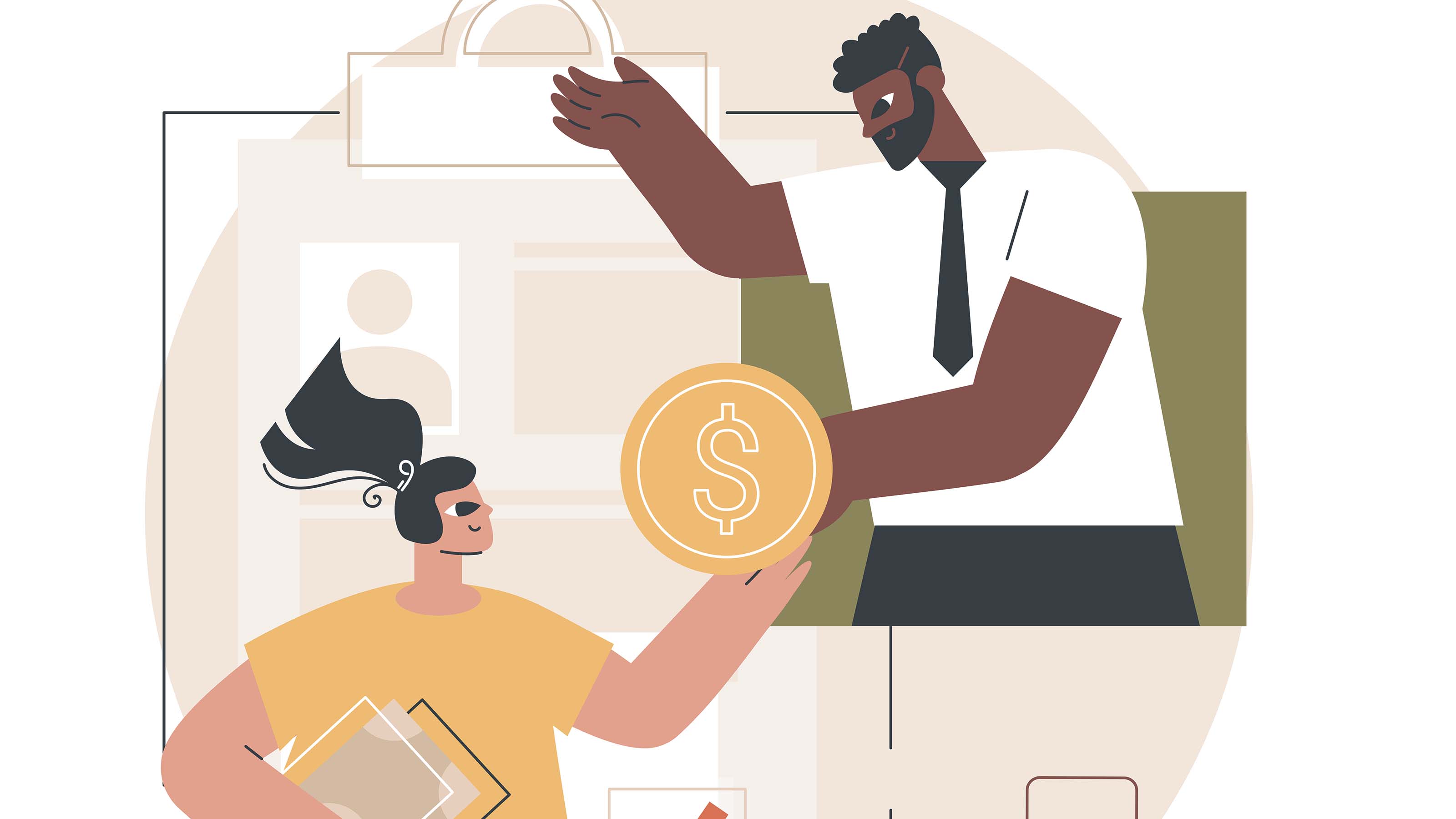Whatever Happened to Peer-to-Peer Lending?
While individuals can still invest in loans to consumers, most digital credit is underwritten by larger funding sources.

Even before Uber upended the taxi business and Airbnb disrupted vacation rentals, the idea of peer-to-peer lending was meant to give individuals alternatives to traditional consumer sources of credit, both as borrowers and investors. But the fintech market is continuously evolving. We’ll catch you up on what’s happened to the concept, and how (and whether) you can invest or borrow from a digital lender.
Most of the firms that started out as online platforms to connect consumers who wanted to borrow money with individual investors who financed loans, also known as peer-to-peer lending, now primarily partner with larger financing sources, like banks and hedge funds, using their artificial intelligence tools to evaluate creditworthiness. Other players have exited the business or had regulatory problems. As the business model continues to grow, it’s also being called marketplace lending or fintech lending.
These days, individual investor funding of digital loans has been dwarfed in the marketplace by larger sources of funds, according to Nimayi Dixit, fintech analyst for S&P Global Market Intelligence.

Sign up for Kiplinger’s Free E-Newsletters
Profit and prosper with the best of expert advice on investing, taxes, retirement, personal finance and more - straight to your e-mail.
Profit and prosper with the best of expert advice - straight to your e-mail.
Still, opportunities for individual investors to fund peer-to-peer lending remain, although as with any investment, you’ll need to do your due diligence. Likewise, borrowers should shop around to determine where they can get the best terms, whether from a fintech platform or elsewhere.
How Fintech Loans Work
Dixit defined digital lenders in a report as “nonbank lenders that offer loans to consumers or businesses through digital channels. These lenders have unique funding models with liquidity provided by investors, credit facilities, securitizations or balance sheet cash.”
According to the U.S. Government Accountability Office, most fintech lenders now use a model in which loans originate through bank partnerships that enable the lenders to operate through bank charters rather than state lending licenses. This enables them to charge uniform interest rates nationwide and avoid state lending limits.
Then the fintech lenders purchase these loans from the banks and sell them to investors or keep them. A small number of fintech lenders originate loans directly and have lending licenses from multiple states. Dixit said not much lending is truly peer-to-peer anymore, meaning individual investors are just a small part of fintech lending.
To give an example, one prominent fintech lender, Prosper, funds about 91% of its loans through what is called its “whole loan channel,” or retail sources of funding, while less than 10% of the funds are from what they call the “notes channel,” Dixit noted. In 2020, the company may have had about $1.5 billion in loans, of which $1.4 billion was funded through the whole loan channel, he said. Peer-to-peer lending “is not a growing segment,” Dixit said, “at least not among the major players.”
Dixit noted this is even true in the United Kingdom, where regulators tried to foster peer-to-peer lending by treating it as a separate regulatory category and even creating a vehicle to encourage it as a retirement investment.
Digital Lending is Growing
According to S&P Global, “Major fintech players have attracted massive capital and added new financial services product lines and features aimed at further entrenching customers to grow market share and improve profitability. Fintech companies in the U.S. attracted nearly $7.5 billion in venture capital funding in the second quarter of 2021 across 194 transactions, up nearly 70% year over year. “The broader marketplace is still strong, but it tends to be dominated by the institutions, rather than the investors,” Dixit said.
The U.S. Government Accountability Office attributes growth in the fintech lending industry to several factors:
- Technical innovations like using new data sources enable them to improve response times, hasten loan approvals and facilitate funding.
- They can cater to unserved market segments, like people who need smaller loans for businesses or people with limited credit histories who may not be able to get what they need through traditional banks.
- In some instances, they may provide loans at lower interest rates than banks for debt consolidation, credit card debt and payday loans.
- Institutional investors are increasing, expanding the funding available for loans.
- Less regulation may provide a competitive advantage because they do not face the same requirements about capital or examinations. This also brings risks to the market and may change as some in Congress have moved toward increasing regulatory scrutiny on the industry.
Ted Rossman, senior industry analyst at Bankrate.com, described marketplace lending as a “niche market” that has stabilized after a somewhat bumpy start.
Digital Lending and the Pandemic
The pandemic appeared to slow the growth of fintech lending, at least early on. ”During the pandemic, this kind of lending declined initially as consumers stopped borrowing,” said Laura Udis. small dollar marketplace and installment lending program manager at the Consumer Finance Protection Bureau. Udis stressed her information was based on third-party data as CFPB doesn’t directly track this kind of information. “I don't think we have a good sense in the last two years of what the true impact will be."
She noted, however, that this “was a really fast growing market up through 2019.”
But the market rebounded in 2021 and reached levels higher than before COVID hit, according to a report Dixit did for S&P Global Market: “Personal-focused digital lenders originated an estimated 37% more in loans in 2021 relative to 2019. A healthy consumer credit environment, rising consumer demand and waning consumer stimulus created healthy demand for consumer credit. Personal-focused lenders were able to grow into this favorable environment without facing some of the headwinds that (small and medium-sized enterprise lending) and student-focused lenders faced.”
In 2021, the report noted, lockdowns eased and government stimulus waned as consumer spending increased. This led to a spike in demand for credit.
Some Fintech Lenders Run Into Trouble
Lending Club, which pioneered the market in 2007, is out of the peer-to-peer lending business, pivoting toward more traditional financial services after it acquired Radius Bank last year. That followed a controversy in 2019 in which Lending Club paid $2 million in penalties to the Justice Department and the Securities and Exchange Commission to resolve allegations it misrepresented whether borrowers met credit requirements.
Then, in 2021, Lending Club was ordered by the Federal Trade Commission to return more than $10 million to more than 15,000 customers who were charged undisclosed fees. The company agreed to pay a total of $18 million to settle the FTC’s charges. Another digital lender, Avant, was ordered by the FTC in 2019 to return more than $2.7 million to customers who lost money because of “unfair and deceptive loan servicing practices.”
Is Peer-to-Peer Lending a Smart Investment?
If you choose to put money into Peer-to-Peer lending, your rate of return will depend on several factors, including the credit ratings of the borrowers you select for your investment. The primary major player in the market now is Prosper. (Other players include Upstart, Avant and Marlette.) Regarding investors, “Prosper says nobody who’s made more than 100 loans on their platform has ever lost money,” Rossman said.
The average return, Rossman added, is a little more than 5%. However, if you decide to invest in loans to people with riskier credit records, you could see a return of more than 14%. “It’s clearly not for everybody,” Rossman noted. But he said investing this way may appeal to some people’s “altruistic” side by offering a way to directly help other consumers.
“I would not advise putting more money than you can afford to lose into one of those peer-to-peer investments,” Rossman said. But it’s worth considering if you want to further diversify your investments and appreciate the reward of helping individual borrowers, Rossman said.
Viktoria Krusenvald, Financer.com Ltd finance manager, was more bullish on P2P investing. It’s, she said, “a great way for beginners to get some investment experience and start thinking about their money in an analytical way. It's far less daunting than investing in stocks and most P2P platforms offer low minimum investment thresholds, giving every person a chance to think about their money and future. P2P can be somewhat of a starting point that helps people develop a money mindset and perhaps after getting some P2P experience, they're ready to dive into the stock market.”
Should You Borrow from a Digital Lender?
Rossman said digital and peer-to-peer loans are “definitely worth considering” as a borrower. But he said, “You’re probably not going to get the lowest interest rate.” He encouraged consumers looking for loans to shop around and include digital lenders in their menu of selections. Be sure to factor in loan origination fees when you’re making your decision.
“Different strokes for different folks,” Rossman said. “On the borrowers’ side, you're probably not going to get the best interest rate, but who knows?”
Get Kiplinger Today newsletter — free
Profit and prosper with the best of Kiplinger's advice on investing, taxes, retirement, personal finance and much more. Delivered daily. Enter your email in the box and click Sign Me Up.
Elaine Silvestrini has worked for Kiplinger since 2021, serving as senior retirement editor since 2022. Before that, she had an extensive career as a newspaper and online journalist, primarily covering legal issues at the Tampa Tribune and the Asbury Park Press in New Jersey. In more recent years, she's written for several marketing, legal and financial websites, including Annuity.org and LegalExaminer.com, and the newsletters Auto Insurance Report and Property Insurance Report.
-
 Get Netflix, Hulu and Apple TV Plus for Free by Joining T-Mobile
Get Netflix, Hulu and Apple TV Plus for Free by Joining T-MobileT-Mobile customers save up to $35/month on streaming services thanks to this Netflix, Hulu and Apple TV Plus bundle. Here’s how to get it.
By Rachael Green
-
 Missed Tax Day? You Could Still Be Eligible for These Valuable Tax Refunds
Missed Tax Day? You Could Still Be Eligible for These Valuable Tax RefundsTax Refunds As many as one million taxpayers could be missing out on a significant tax refund.
By Gabriella Cruz-Martínez
-
 Short-Term Rentals: 10 Things to Know About Sites Like Airbnb
Short-Term Rentals: 10 Things to Know About Sites Like AirbnbA successful short-term rental stay requires knowing the ins and outs of booking sites. Here's our take on Trip Advisor, Expedia, Booking.com, VRBO and Airbnb.
By Laura Vecsey
-
 Try Swimply, the Airbnb of Pools, and Rent a Luxury Pool This Summer
Try Swimply, the Airbnb of Pools, and Rent a Luxury Pool This SummerWith Swimply, you can live it up at a luxury pool while escaping the heat and going for a swim.
By Erin Bendig
-
 Save on Airbnb with Credit Card and Airline Rewards
Save on Airbnb with Credit Card and Airline RewardsUse points or miles to save on Airbnb and VRBO rentals. You can also rack up rewards to save on future travel.
By Ellen B. Kennedy
-
 Roth IRA Contribution Limits for 2025
Roth IRA Contribution Limits for 2025Roth IRAs Roth IRA contribution limits have gone up. Here's what you need to know.
By Jackie Stewart
-
 Four Tips for Renting Out Your Home on Airbnb
Four Tips for Renting Out Your Home on Airbnbreal estate Here's what you should know before listing your home on Airbnb.
By Miriam Cross
-
 Five Ways to a Cheap Last-Minute Vacation
Five Ways to a Cheap Last-Minute VacationTravel It is possible to pull off a cheap last-minute vacation. Here are some tips to make it happen.
By Vaishali Varu
-
 How to Figure Out How Much Life Insurance You Need
How to Figure Out How Much Life Insurance You Needinsurance Instead of relying on rules of thumb, you’re better off taking a systematic approach to figuring your life insurance needs.
By Kimberly Lankford
-
 Amazon Big Deal Days Is Coming! We’ve Got All the Details
Amazon Big Deal Days Is Coming! We’ve Got All the DetailsAmazon Prime To kick off the holiday season with a bang, Amazon Big Deal Days runs Tuesday, October 8 and Wednesday, October 9.
By Bob Niedt